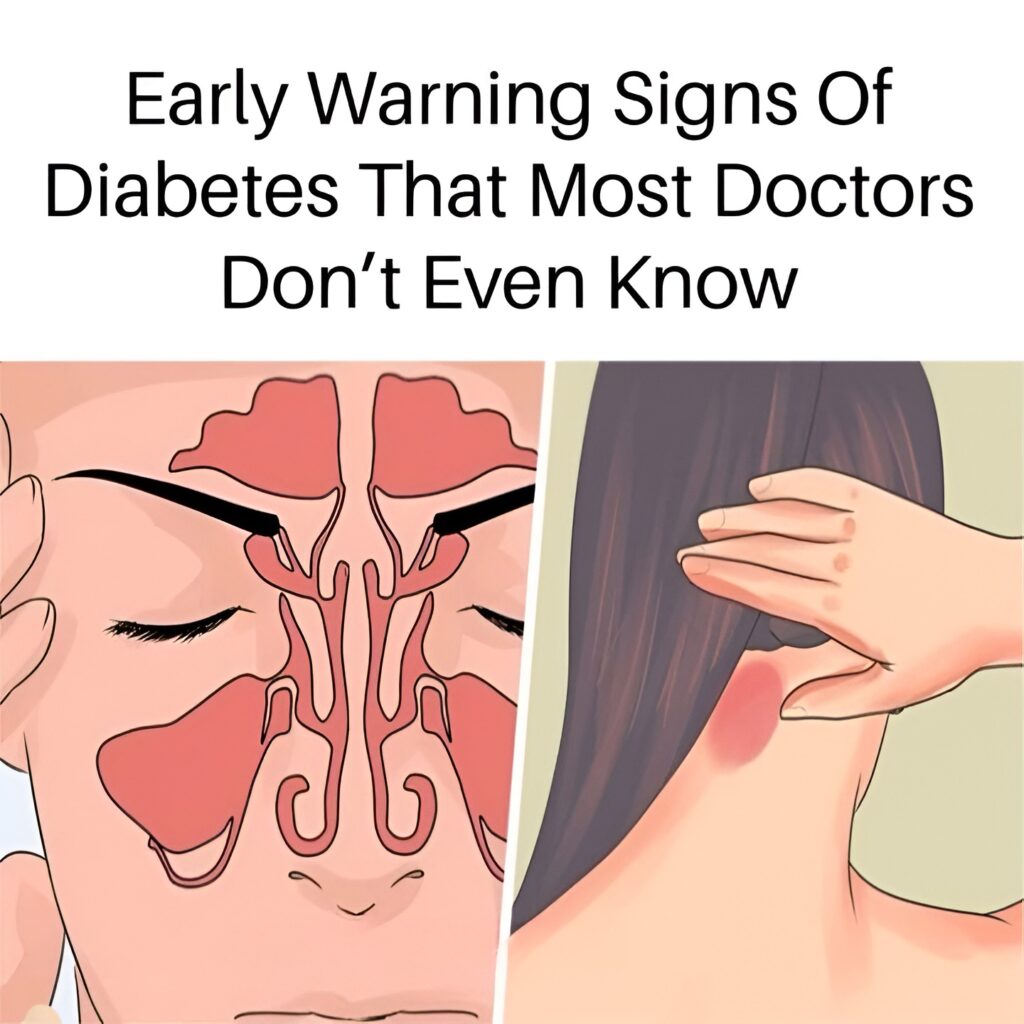
Early Warning Signs Of Diabetes That Most Doctors Don’t Even Know

1. Frequent Skin Infections or Itchy Skin
- Why it matters: Elevated blood sugar can weaken the immune system and affect circulation, leading to skin problems.
- What to look for: Recurrent fungal infections (like jock itch, athlete’s foot), boils, or dry, itchy patches — especially in the folds of the skin.
2. Dark, Velvety Patches of Skin (Acanthosis Nigricans)
- Why it matters: Often found around the neck, armpits, or groin. It’s a subtle but powerful early indicator of insulin resistance.
- What to look for: Brownish-black, thickened patches of skin that feel soft or velvet-like.
3. Chronic Fatigue After Meals
- Why it matters: Post-meal blood sugar spikes and crashes can make you feel abnormally tired or drowsy.
- What to look for: Feeling sleepy, foggy, or sluggish within an hour of eating carbs.
4. Tingling or Burning in Hands or Feet (Even Mild)
- Why it matters: Early nerve damage (diabetic neuropathy) can start silently.
- What to look for: Occasional tingling, numbness, or “pins and needles” sensation, even if it’s mild or infrequent.
5. Sudden Changes in Vision
- Why it matters: High blood sugar can cause swelling in the eye lens, leading to temporary blurred vision.
- What to look for: Difficulty focusing, or changes in vision that come and go — even before diagnosed as diabetic retinopathy.
6. Unusual Weight Loss (With Normal Eating)
- Why it matters: The body may start breaking down muscle and fat for energy when it can’t use glucose.
- What to look for: Losing weight without trying, while appetite stays the same or even increases.
7. Frequent Urination (Especially at Night)
- Why it matters: Excess sugar in the blood forces the kidneys to work overtime, producing more urine.
- What to look for: Waking up multiple times a night to pee, or noticing you’re peeing more often than usual.
8. Increased Thirst That Doesn’t Go Away
- Why it matters: Frequent urination causes dehydration, leading to constant thirst.
- What to look for: Drinking more water than usual but still feeling dry or thirsty.
9. Slow-Healing Cuts or Bruises
- Why it matters: High blood sugar slows down the body’s healing process.
- What to look for: Small wounds taking longer than usual to scab over or heal.
10. Mood Swings or Irritability
- Why it matters: Fluctuating blood sugar affects brain function and mood regulation.
- What to look for: Feeling unusually irritable, anxious, or low energy without clear reason.
11. Frequent Headaches
- Why it matters: Blood sugar swings can trigger headaches or migraines, even before other symptoms appear.
- What to look for: Headaches that come after eating or skipping meals.
12. Sweet or Fruity Breath
- Why it matters: Indicates the body is producing ketones — often associated with poorly controlled or undiagnosed diabetes.
- What to look for: Breath that smells like fruit, nail polish remover, or is unusually sweet (often picked up by others before you notice).
⚠️ What You Can Do Early On:
- Get tested: Ask your doctor for a fasting glucose test, HbA1c test, or oral glucose tolerance test (OGTT).
- Track symptoms: Keep a symptom journal — even subtle signs help build a clearer picture.
- Diet & exercise: Reduce refined sugar and processed carbs, and aim for 30 min of movement daily.
- Monitor weight & waistline: Belly fat is a strong indicator of insulin resistance risk.
Doctors often rely on classic signs like thirst, frequent urination, and blurred vision — but these subtle symptoms can appear years earlier. Listening to your body and being proactive is key.